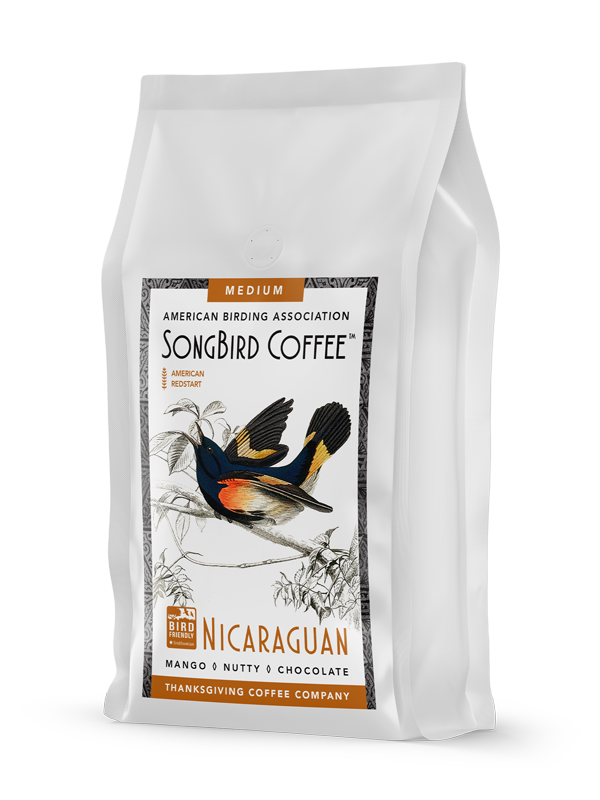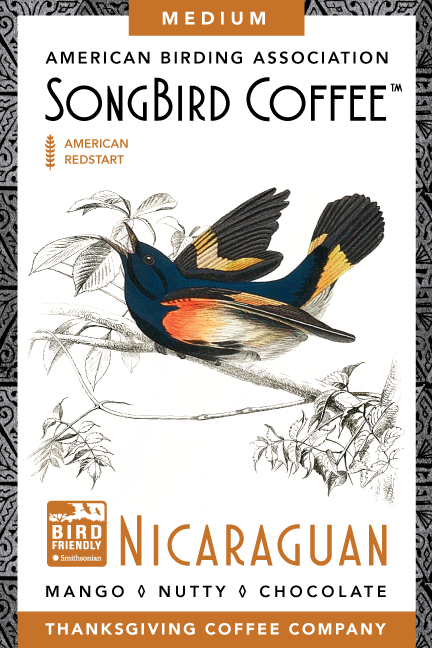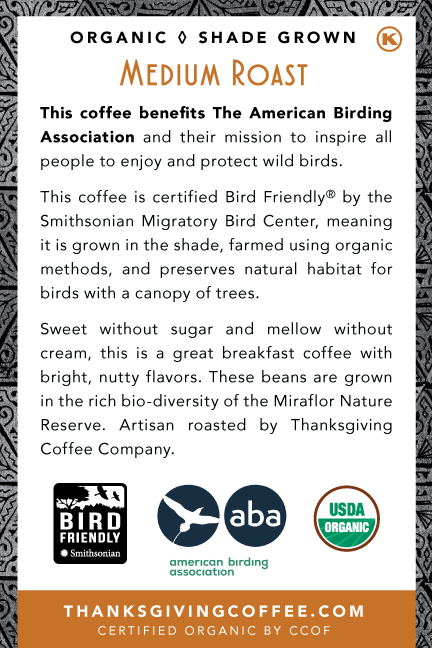SongBird Nicaraguan
SongBird Nicaraguan
Sweet without sugar, mellow without cream, this is a great breakfast coffee. This coffee is roasted to a light milk chocolate color where its bright and complex flavors explode into life.
"Thanksgiving Coffee’s Organic Shade-Grown Nicaragua (score of 92), a blend of the respected Maracaturra, Caturra and Catuai varieties meticulously processed by the traditional wet method. It is also the only coffee we review that is certified Bird-Friendly by the Smithsonian Institution, hands-down the most uncompromising and rigorous of environmentally focused certifications. The idealism and passion that drove the growing and farm management that produced this coffee clearly went into its processing as well. it most clearly represents the classic Nicaragua cup of tradition, with its inherent balance, quietly juicy acidity and buoyant, satiny mouthfeel." Ken Davids, Editor-In-Chief and Lead Cupper for Coffee Review
These are premium coffee beans - certified Bird Friendly by the Smithsonian Migratory Bird Center as grown in the shade for the richest flavor, certified organic, certified GMO-free, and promoting naturally healthy soil. This is the hardest certification to get because it is traced from the farms through the roasting and packaging. You reap the rewards in your cup!
Each package sold benefits the American Birding Association's programs. By drinking shade-grown and bird friendly certified coffee every morning, you are supporting these coffee farmers, the efforts of the ABA, and the countless birds they are protecting through community outreach and conservation. Learn more.
Customer Review
Coffee to Water Ratio
Using the correct amount of coffee will ensure that your coffee is brewed to strength, without over-extracting or under-extracting the coffee to compensate for an inappropriate dose. We recommend 2 grams of coffee for every fluid ounce of water used to brew. Weighing coffee is the most accurate way to measure the appropriate dose. If a scale is not available, we recommend 2 heaping tablespoons of ground coffee for every 5 ounces of water used to brew.
Grind Size
Producing the correct particle size in ground coffee is one of the most important steps in coffee brewing. In general, a finer grind will produce a more intense brew and a coarser grind will produce a less intense brew. At the same time, a grind that is too fine will produce an over-extracted, astringent brew, and a grind that is too coarse will produce a weak, under-extracted brew lacking flavor. In pour-over methods, grind size also affects the rate of extraction, as water will pass more slowly through a finer grind, and more quickly through a coarser grind. We strongly recommend burr grinders over blade grinders.
Water Temperature and Quality
Water temperature dramatically affects the extraction of coffee’s flavor during brewing. We recommend brewing with water at 200-202° Fahrenheit for best results. Using fresh, clean, chlorine-free water is essential.
Coffee 101
Discover how to make the most in your cup with our brew blog - Coffee 101. Brewing variations, roast colors, coffee storage, steaming, and so much more. Not just for beginners, this info has gems for all coffee enthusiasts from novice to barista and beyond.
"Hands down the best coffee I’ve ever tasted - and the only one I’ve ever been able to drink without cream! Smooth and flavorful. I’m so glad I subscribed so I never have to be without it. Thanks to my bird-watching friends for the recommendation."






